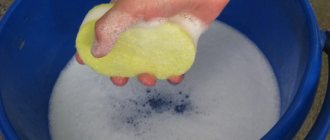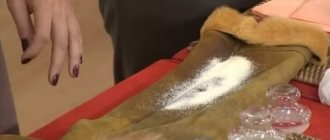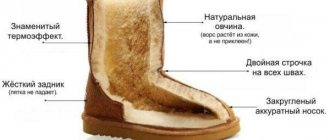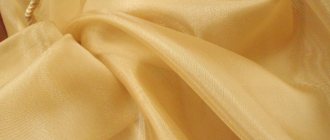In a wedding dress, the girl attends the celebration, participates in a photo shoot and a feast. During these few hours of active wear, the outfit may get dirty.
You can restore the decent appearance of your wedding dress yourself, or by turning to dry cleaning services.
Let's try to figure out whether and how to wash a wedding dress at home, manually and in an automatic washing machine.
Is it possible?
Not every formal dress can be washed. If there is a label on the product, the care rules must be specified in it, as well as the composition of the fabric.
Before you start cleaning, you need to find out the following points:
- what materials are used for sewing;
- clothing color (white, with shades, bright);
- the presence of a petticoat;
- the presence of decor and its appearance.
Most wedding dresses are made from synthetic materials and are floor-length. In this case, the most problematic part of the skirt is the hem, which is close to the ground and gets very dirty.
The petticoat in most models is removable. If it is not dirty, it is not worth washing.
The bodice of the outfit may have a corset embroidered with:
- stones,
- rhinestones,
- embroidery,
- lace.
These materials “do not like” washing and require especially delicate handling.
The area that gets dirty most often is the armpits. If rich decor is sewn onto the material, it is better to use a toothbrush for cleaning and clean only with your hands. Sewn and glued decor (beads, rhinestones, stones, etc.) does not allow for complete washing of the product .
If the jewelry is removable, it is better to remove it before cleaning and then return it to its place. Detachable elements (without decoration with stones) can be washed. Delicate treatment can be achieved by hand washing using mild household chemicals.
A smooth satin dress, or one made of polyester, without bulky elements, can be machine washed on a delicate cycle without spinning. But a lace product can only be processed by hand, just like one sewn from tulle. You can find out more about washing dresses here.
Features of cleaning dresses made of various materials
Before washing a dress made of any fabric, remove any jewelry that is attached to the fabric. If this is not done, the fabric will tear and deteriorate. Check carefully to see if there is a brooch, bow, flower or ribbon left in the outfit. Do not use the spin cycle in the washing machine or wring out the outfit when hand washing. Twisting deforms the fabric and harms the texture of the material. The thing will be hopelessly spoiled. Instead of squeezing, let the water drain.
Tulle dresses are not machine washable: hand wash is required. Dilute a mild detergent in lukewarm water and gently soak the dress. Tulle is a thin material and must be washed carefully. Rinse several times after it is clean. You need to rinse until the soap is gone. Do not wring out the tulle dress. Instead, shake it after the water has drained and hang it to dry.
Satin wedding dresses should only be washed by hand. Do not use soap solutions - special detergents are suitable for satin. Soap leaves stains on the satin.
The lace trim of the outfit is also washed carefully. Use a mild product, powder or shampoo. Keep the lace in water for some time. After washing, before rinsing the item, add conditioner to the water.
- How to choose a bag for washing different types of things
- Alternative methods for disinfecting soft toys
- Is it possible to restore a woolen item after an unsuccessful wash?
Chiffon requires hand wash at low temperature. Do not wash with chlorine-containing detergents or bleaches: the chiffon will deteriorate. If you decide to machine wash your chiffon outfit, be sure to place it in a bag for delicate fabrics.
In the washing machine
Machine washing is not the best option for dressy dresses. The exception is items of a simple silhouette without decoration, sewn from material that can be machine washed. But most wedding dresses do not fall into this category.
If the wedding dress is simple in style, has no decorative elements, and is machine washable, processing will not be very difficult.
Procedure:
Inspect and prepare the item - remove stains, and, if necessary, make repairs.- Remove the belt, lacing and other removable elements.
- If there are beads and rhinestones on the bodice that cannot be removed, gauze or thin fabric is sewn on top of them. It will protect the decor from rubbing, loss and damage.
- Turn the product inside out.
- If there is dirt along the hem or under the arms, it must be washed.
- Place the wedding dress in a laundry bag. It should not have too large cells so that accidentally torn off beads do not fall into the drum of the washing machine.
- For washing, use detergent in gel form. For snow-white, choose a gel marked “for white things”, for other shades - a universal one, intended for colored clothes.
- Set the mode to “delicate” or “silk”.
- Turn off spinning and drying.
- If there is a “wrinkle-free wash” function, it must be used.
- The heating temperature is set to +30ºС or as recommended by the manufacturer.
- Washing time should be minimal, preferably up to 40-50 minutes.
- Start the wash cycle.
- After the washing machine has been used, the item must be immediately taken out and straightened.
If the dress is not taken out immediately, it can become very wrinkled and develop an unpleasant damp smell that is difficult to remove.
How to prepare material for washing?
First you need to carry out the soaking procedure. It is better to use gentle products or baby shampoo. They do not contain aggressive components or dyes that spoil the fabric. The dress should remain in the liquid for 2 hours so that the dirt and dust that has accumulated during the wedding day are completely dissolved in the liquid.
If small tears are found on the outfit, small decorative parts are lost, or the corset is deformed, you should contact professionals in the atelier. They will rid the item of small flaws so that they cannot be noticed with the naked eye.
Handwash
When starting to hand wash such a complex item as a wedding dress, you need to follow a clear sequence of actions.
Proper preparation is an essential part of cleaning a wedding dress.
You need to start by inspecting the thing. Torn and damaged areas need to be repaired before washing. If they are not addressed in time, the defect can only become more noticeable and larger in area.- If there are stains on clothing, they should be treated first. To do this, it is advisable to know what they are left with.
- All elements that can be detached from the dress must be removed.
Depending on the composition of the material, household chemicals or homemade recipes can be used for stains.
Even subtle stains should be wiped with a mild soapy solution and a sponge . If you leave them, the spots will appear brighter over time. Folk recipes and store-bought stain removers will come to the rescue.
For dresses that have a slight tint of yellow, beige, pink or other tones, you need to use household chemicals designed for colored clothes.
To wash a wedding dress, you must use non-hot water at a temperature of +30ºС to +35ºС . Hotter temperatures can cause fabric deformation and shrinkage of the material.
Detergents should be chosen that are delicate. Preferably in gel form. It is better not to use washing powders due to their rough texture and poor dissolution in water compared to liquids.
Procedure:
Fill a large container with water at the required temperature.- Dilute the detergent.
- Dip the dress into the soap solution.
- If there are dirty places, such as the hem, you can gently soap them with a soft sponge.
Soaking should not be long - up to a quarter of an hour, maximum - up to 20 minutes. - Acting carefully, the item is erased. Do not rub the fabric.
- The rinsing must be very thorough so that no detergent residue remains in the fibers of the material.
To do this, the water should be changed several times. The final rinse can be done by hanging the product over the bathtub and directing water from the shower onto it. - A wet dress should not be twisted. It is hung to allow water to drain from the product.
If the outfit does not require a full-scale wash, you can hang it over the bathtub, moisten it with a shower head, and wash only the necessary areas.
What are the best products to use for washing?
The correct choice of detergent composition is very important. The result is influenced by a combination of factors: the origin of the stain and its complexity. For minor and light stains, a special powder for a specific type of fabric is suitable. Stubborn traces of drinks, food, grass and other things can be easily removed with a solution of soda, soap or salt. In difficult cases, you will need to use a combination of remedies. Try to remember what got the dress dirty, and then you can come to a conclusion about how to clean it.
Removing stains at home
The origin of stains at a wedding is associated with a feast, a photo shoot, competitions, strong manifestations of emotions and wearing throughout the day.
Wine
Removing wine stains should not be left “for later . First aid for damaged clothing is to try to prevent liquid from absorbing deep into the fibers.
The newly spilled wine is blotted. It is strictly forbidden to rub the stain.
If you have mineral sparkling water without dyes on hand, you should pour it over the wine . This technique, even if it does not lead to the complete disappearance of the stain, will significantly facilitate the subsequent removal of traces of wine.
Another way is to use hydrogen peroxide from the first aid kit:
- moisten a sponge or piece of cotton wool well with peroxide;
- Treat the stain with gentle blotting movements, moving from the edges to the center;
- after finishing the treatment, this place is washed with water.
If possible, the dress should be washed with soap. After wiping it with a soap solution, leave the item for 5-10 minutes, after which it is lightly rubbed and rinsed.
Grass
A wedding is not only a celebration and feast. The newlyweds, trying to capture happy moments, take photographs in picturesque places in nature. Bright green grass looks beautiful in photos, but often leaves difficult marks on the bride's dress.
The following recipe will help you deal with stubborn marks:
the affected areas should be carefully wiped with a sponge dipped in soapy water;- A solution is prepared separately from 1 tbsp. water and 1 tbsp. l. ammonia;
- Using a sponge or sponge, treat the stains with the prepared solution;
- areas stained with grass are washed again with soapy water;
- The product is rinsed, washing away the remaining solution and soap.
Lipstick
Hugging and kissing friends and relatives can lead to lipstick marks on your dress.
Talcum powder or baby powder will help remove stains quickly. If possible, after sprinkling the lipstick marks, the dress should be left to sit for an hour. After this you can wash it as usual.
Dust and dirt
The dustiness of the fabric can be eliminated without washing; the item can be cleaned with a dry brush . If there are traces of dirt on it, these places can be washed with soapy water using a sponge. After this, the clothes are rinsed and dried.
Sweat
Sweat stains after spending a whole day in the same clothes are not such a rare occurrence. To remove yellow stains, you can use one of the home recipes.
For fresh, not old stains, even regular washing with laundry soap, which is carried out before the main wash, can be effective.
An alternative method is to use salt.
- Prepare a solution of 1 liter of water and 8 tbsp. l. salt.
- Mix everything thoroughly, until the grains are completely dissolved.
- Not the entire dress should be soaked in the solution, but only the soiled parts.
- Leave for a quarter of an hour.
- Rinse.
A particularly good effect is achieved by using this recipe on silk.
Ink
The ballpoint pen that the toastmaster introduces into the script of competitions at a wedding can also leave insidious marks on a white background.
The following recipe will help solve the problem:
- Spray hairspray onto the stain.
- Leave for 1 hour.
- Wash with soapy water.
- Rinse.
Washing a wedding dress by hand
This outfit is best washed by hand. This option is more gentle and no less effective. Hand washing instructions:
- fill a third of the bath with warm water;
- completely dissolve the detergent;
- completely immerse the outfit in water;
- wait half an hour;
- gently scrub the most contaminated areas with a soft sponge (do not use force, movements should be smooth and light);
- drain the dirty water and pour in clean water;
- rinse the product with smooth movements from one edge of the bath to the other;
- repeat rinsing at least three times, changing the water.
Note! During the washing process, the dress should not be squeezed or twisted.
How to wash a dress by hand if you don't have a large bathtub
In some apartments, a full bath is replaced by a shower. There is a bathhouse in a private house. In such cases, the following options are suitable:
- Partial washing of individual areas - this option is suitable if the product is not very dirty.
- Vertical washing with a shower - on wooden hangers in a vertical position. The dress must be moistened generously with a stream of water. Then apply a solution of soap or other detergent. It should be carefully rubbed into the fabric with a soft sponge. You should wait half an hour for the dirt to soften. Then rinse the dress in clean water.
Important! In both options, care should be taken to ensure that the detergent is completely removed to avoid streaks and stains.
Proper drying
You need to dry your wedding dress as carefully as possible. After washing, it is necessary to avoid spinning and twisting the material.
When wet, it is suspended above the bathtub. Excess water simply drains away. Dry in a well-ventilated place with air circulation.
You cannot speed up the drying process by placing a wet product:
- near the battery,
- fireplace,
- in the open sun.
If damaged, the fabric may become stained and deformed.
If the base of the dress is cotton, it cannot be hung to dry, as the fabric will stretch under its own weight. The same applies to heavy materials. Such dresses are dried in a horizontal position. It is best to use a tightly stretched mesh dryer for this.
If this is not available, use large non-fading terry towels . They can be spread directly on the floor, placing a dress on top. As the towels get wet, replace them with new ones. The dress itself also needs to be turned over periodically so that it dries evenly.
Ironing Features
Ironing a dress quickly and easily will not work. It is imperative to take into account the model and material used. A steam generator will be a good helper in this matter.
| Textile | Ironing nuances |
| Satin or velvet | Ironed only from the inside out |
| Polyester | Do not iron, wet fabric straightens under its own weight |
| Lace | Ironing can only be done through the intervening fabric. In this case, the iron should be set to the minimum temperature. It is possible to use the steaming function. |
| Tulle or chiffon | Vertical steaming |
It is recommended to start ironing from the bodice of the dress, and use a steamer first from the train and skirt.
How to dry and iron a dress
Do not wring out the dress before drying! After washing, place a clean wire rack on the bottom of the bathtub and carefully place the product on top. When most of the water has drained, you can hang the dress on a hanger or lay the clothes horizontally on a light terry towel or sheet and leave in this position until completely dry.
During drying, regularly straighten the material, remove folds and stripes to avoid wrinkles. Do not dry items near or on radiators or heating devices. Avoid exposing the material to direct sunlight. When the clothes are dry, you can start ironing.
You can iron a wedding dress only with a clean soleplate without soot, scale, stains or burnt areas. The temperature and ironing process depend on the type of fabric. As a rule, for delicate and synthetic materials, the heating of the iron should not exceed a minimum temperature of 100-110 degrees.
It is better not to iron organza, tulle and chiffon, but hang it on a hanger after the water has drained. Carefully straighten the material, and then the dress will straighten and take its previous shape without ironing. Crumpled areas can be steamed by weight. As a last resort, items made of chiffon and organza are ironed through silk or tissue paper at a minimum temperature without steam.
Silk and satin, veil, lace dress and lace elements are ironed exclusively through gauze or natural fabric only from the wrong side at a minimum heating temperature without the use of steam. Polyester can be ironed at an average temperature of up to 150 degrees without a steamer.
First, place a white or light-colored sheet or other similar fabric on the ironing board. Then turn the dress inside out and lay it out on an ironing board with a sheet.
Before ironing, it is advisable to steam the product and then cover the top of the product with damp gauze. Ironing should be done carefully and carefully using smooth movements. Do not press the sole too hard into the material or linger in one area.
Dry cleaning
Contacting a dry cleaner can help in a hopeless situation:
- when the stains are complex and there is no time to remove them;
- there are no conditions for washing and drying such a bulky outfit;
- the dress is exclusive and very expensive;
- The outfit has very complex and/or voluminous decor.
Dry cleaning will help restore the appearance of your dress to a professional level. Placing an order can be done by phone or online. You can find a suitable dry cleaner on the Internet.
It would also be a good idea to study customer reviews to ensure the quality of the services provided. The cost of cleaning a wedding dress starts at an average of 3,000 rubles.
Dry cleaning provides:
- stain removal;
- restoration of an attractive appearance of the product;
- ironing;
- elimination of unpleasant odors, for example, from cigarette smoke;
- after processing, place the item in a separate case.
For the convenience of the client, dry cleaners provide courier services for picking up and delivering dresses after cleaning.
What do signs say about washing clothes after the wedding?
There is a popular belief that a wedding dress should not be washed after the wedding, as this can lead to quarrels and disagreements in the family. However, according to a similar sign, well known to the residents of Bulgaria, a wedding dress can be safely washed a year after the birth of the first child.
There are a lot of signs and beliefs among people regarding wedding dresses.
According to another popular belief, a wedding dress must be washed no later than 40 days after the wedding day with the words: “What bad things you collected, you put away yourself. Amen” The meaning of such a ritual is to independently remove negative energy and the evil eye. Whether to wash your wedding dress for this reason is up to you to decide.











